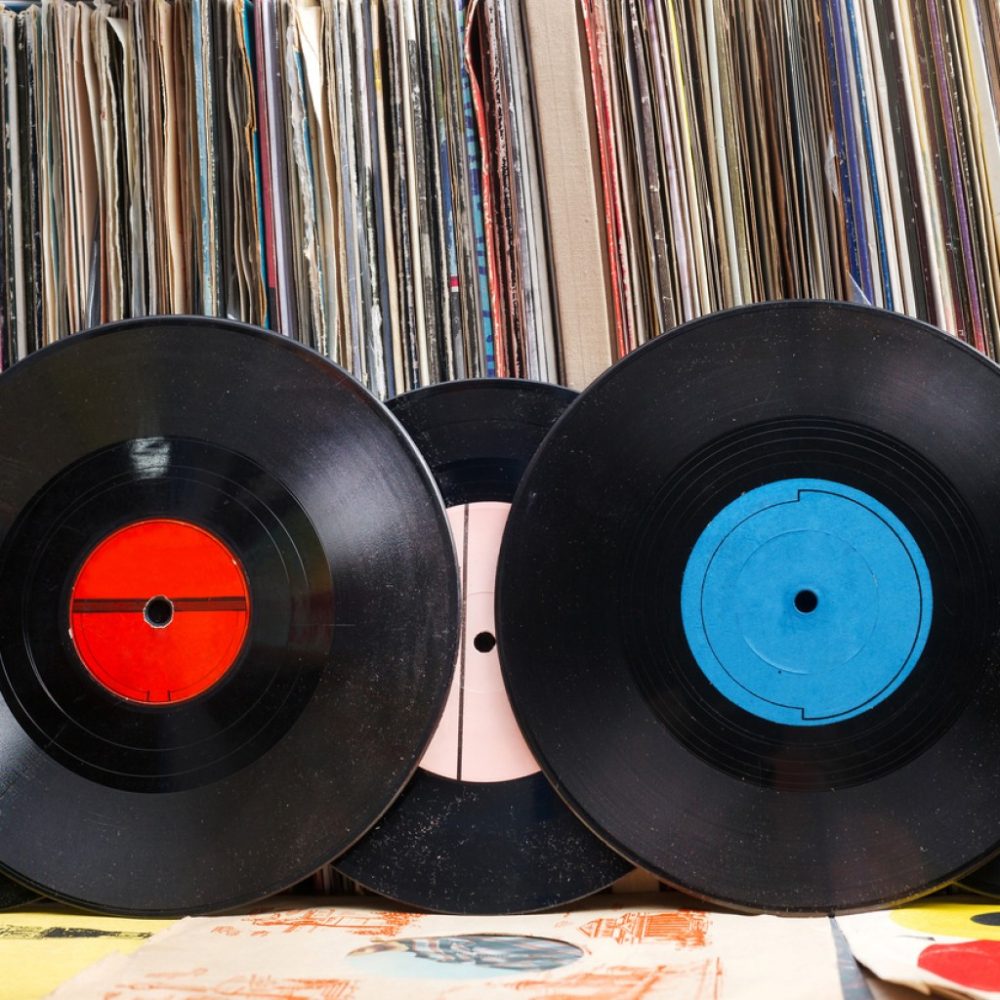The Ultimate Guide to the Types of Vinyl Records: Explore the World of Grooves
Vinyl records have made a significant comeback in today’s digital age. Once considered a vintage medium, they have transformed into a popular form of music playback. Their warm sound quality and tactile nature appeal to a wide range of listeners, from casual fans to avid collectors. Many people find joy in the act of physically interacting with music through vinyl records, adding a unique charm to the listening experience.With this resurgence, many enthusiasts are eager to learn more about the different types of vinyl records available. Whether you are a seasoned collector or a newbie to vinyl, understanding these types can enhance your appreciation for this timeless medium. So, what are the various types of vinyl records you can explore?
In this guide, we will cover the primary types of vinyl records, their characteristics, uses, and the history behind them. Armed with this knowledge, you can confidently dive into the world of vinyl and expand or curate your collection.
Understanding Vinyl Records
Before diving into the specific types of vinyl records, it is helpful to grasp what vinyl records actually are. Vinyl records are flat discs made from a vinyl material that has grooves etched into it. These grooves contain the audio information of a recording. When the record spins on a turntable, a stylus or needle runs through the grooves, converting the physical grooves into audible sound.
Vinyl records come in various thicknesses and compositions. The most common vinyl thickness for commercial records is around 120 grams. However, some premium records may weigh up to 180 grams for enhanced durability and sound quality.
One critical feature that differentiates types of vinyl records is the RPM (revolutions per minute). The RPM denotes how fast the record spins on a turntable. Common RPM settings include 33, 45, and 78, each catering to different listening needs. The RPM affects audio quality and how much music can fit on a single side of the record.

Types of Vinyl Records
The three primary types of vinyl records—33 RPM, 45 RPM, and 78 RPM—serve different functions within the music community. Here’s a deeper look into each type:
33 RPM Records
33 RPM records, or long-playing (LP) records, are typically 12 inches in diameter and can hold up to 20 minutes of music per side. These records are designed for full albums and are the most popular type among collectors and audiophiles.
Artists and record labels use 33 RPM records to produce albums encompassing a cohesive collection of songs. Music genres ranging from rock to classical can be found in this format. The ability to play an entire album without needing to flip the record frequently adds to its appeal.
LP records often feature engaging artwork on the cover, which enhances the overall listening experience. Many collectors appreciate acquiring 33 RPM records for both their audio fidelity and the visual aspects of the album art. Iconic albums like Pink Floyd’s The Dark Side of the Moon and The Beatles’ Abbey Road are often sought-after examples found in this format.
45 RPM Records
Next, we have the 45 RPM records, commonly known as singles. These records are primarily 7 inches in diameter and typically hold one song on each side. The 45 RPM format became highly popular in the 1950s and 60s, establishing itself as the standard for new music releases.
The shorter playing time makes 45 RPM records ideal for quick play, which is especially convenient for DJs and radio stations. Many pop and rock hits released in the 20th century were showcased in this format. For example, artists like Elvis Presley and Madonna had numerous singles released on 45 RPM records that became cultural phenomena.
Collectors often seek rare or limited editions of 45 RPM records, knowing that these singles represent key moments in music history. The limited run of certain pressings can significantly increase their value over time.
78 RPM Records
78 RPM records were the standard format for recorded music before the introduction of the 33 and 45 RPM vinyl records. Typically made from shellac, these records were larger and heavier, often measuring 10 to 12 inches in diameter. They generally contain around three to five minutes of music per side.
While limited in playtime, 78 RPM records have enormous historical significance. Early jazz, blues, and classical music from the late 1800s to the 1950s are often available in this format. Collectors treasure 78 RPM records, as they provide insight into the music and cultural trends of that time period.
Due to their fragility, 78 RPM records require special care and attention. Collectors who focus on vintage and historical recordings often invest in high-quality turntables that can handle the delicate nature of these older records.
Other Vinyl Formats
While the above three types dominate the vinyl landscape, additional formats add variety:
– Picture Discs: These are visually stunning records printed with images on the vinyl surface. Picture discs can be found in 33 or 45 RPM formats, allowing for both audio and visual enjoyment. They are often sought after by collectors but may not always offer the best sound quality.
– Colored Vinyl: Vinyl records can be produced using various colors. Colored vinyl releases are often limited editions and eye-catching additions to collections. While sound quality may vary, they are primarily valued for their aesthetic appeal.
– Vinyl Box Sets: A box set often contains multiple LP records linked to a specific artist, genre, or time period. They are usually packaged together with elaborate artwork and sometimes include extras like booklets or collectibles.

Advantages of Different Vinyl Types
Diving into the advantages and disadvantages of the various types of vinyl records can provide valuable insights for collectors and music enthusiasts.
33 RPM Records
– Advantages:
– They can hold an entire album, allowing for uninterrupted listening.
– The larger format usually results in better sound quality.
– Collectors appreciate the meaningful album art included in LP format.
– Disadvantages:
– They require a larger physical space for storage.
– The larger size can make them susceptible to warping if not properly stored.
45 RPM Records
– Advantages:
– These records offer quick play and easy access to popular singles.
– They are smaller and easier to store than full LPs.
– Collectors often seek out rare pressings, enhancing their value.
– Disadvantages:
– Limited playtime means frequent flipping for multiple track listening.
– The smaller size can lead to misplacement if not stored carefully.
78 RPM Records
– Advantages:
– They provide a rich historical context for early music.
– Collectors value the authenticity of vintage recordings.
– Some tracks are exclusive to the 78 format and unavailable elsewhere.
– Disadvantages:
– They are often fragile and susceptible to breakage.
– Sound quality might not match that of modern vinyl formats.
Other Formats
For formats like picture discs and colored vinyl, enthusiasts enjoy the aesthetics but may encounter varying audio quality. It ultimately comes down to personal preference—whether one values visual appeal or prioritizes sound fidelity.
The History of Vinyl Records
Understanding the history of vinyl records is critical to appreciating the various types available today. The journey began in the late 19th century with the introduction of shellac records. These early formats, primarily made from shells, were brittle and limited in sound quality.
In the 1940s, the emergence of vinyl brought a significant advancement. Vinyl became the material of choice due to its flexibility and durability. The transition from shellac to vinyl allowed for better sound quality and longer playtimes. The introduction of the 33 RPM long-playing record in the late 1940s revolutionized the music industry. It allowed artists to release full albums instead of just singles, changing the way music was consumed.
By the 1950s, the 45 RPM single format emerged, targeting a youth demographic eager for quick access to popular songs. This format popularized the notion of the music single, a concept that continues to dominate the charts today.
The cultural impact of vinyl records cannot be overstated. They shaped the music industry, contributing to the popularity of genres such as rock and roll, pop, and blues. In the late 20th century, the advent of digital music led many collectors to believe vinyl was becoming obsolete. However, the nostalgia and tangible experience of listening to vinyl records made a powerful comeback in the 2000s.

Collecting Vinyl Records
If you’re keen on diving into the world of vinyl records, here are some tips for starting or expanding your collection:
Understanding Your Interests
Before you begin collecting, it’s essential to understand your preferences. Consider genres or specific artists that resonate with you. Narrowing down your focus allows you to build a more meaningful collection.
Assessing Record Types
Evaluate the types of vinyl records that interest you. Decide whether you want to focus on 33 RPM albums, 45 RPM singles, or even delve into vintage 78 RPM records. Each type offers unique advantages and caters to different listening experiences.
Finding and Evaluating Records
Finding a reputable vinyl source is crucial. Many collectors turn to local record shops, online marketplaces, and vinyl fairs. When purchasing, assess the condition of the vinyl—look for scratches, warps, or other damages that may affect playback. The grading system typically rates records from Mint (M) to Poor (P), helping buyers assess quality.
Staying Informed
Join vinyl communities and forums dedicated to the appreciation of records. Engaging with fellow enthusiasts can provide invaluable insights into the latest trends and help you uncover hidden gems. Moreover, keeping up with news in the vinyl world will keep you informed about new releases and best practices.
Conclusion
In summary, exploring the types of vinyl records opens up a fascinating world for enthusiasts and newcomers alike. Understanding the differences between 33 RPM, 45 RPM, and 78 RPM records enhances your appreciation for this cherished medium. Each vinyl type offers unique characteristics, each appealing to different listeners for various reasons.
From the full experience of an LP album to the excitement of a 45 RPM single, the formats have evolved significantly over the years. Collecting vinyl records can be an enriching experience, fostering a deeper connection to music and its history.
Now is the perfect time to delve into the wonderful world of vinyl records. Whether you are a seasoned collector or a curious newbie, selecting the right types of vinyl records can help you create a timeless musical journey. Explore and enjoy the rich sounds of music on vinyl!





